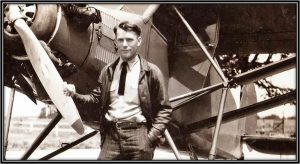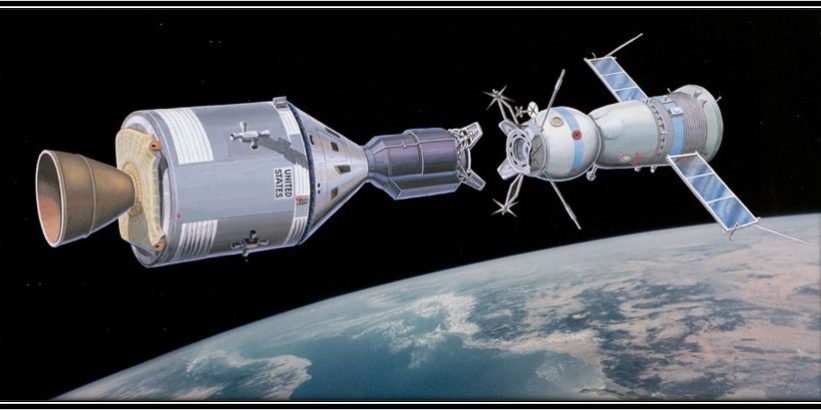A July 17th “Fourfer”
Contributor: Barry Fetzer
Sources: History.com
July 17th was an epic day in aviation history that includes at least two massive aviation tragedies and two positive aviation events. I like to focus on the positive (my call sign when I was on active duty was “Sunny” because of my alleged “sunny” disposition) so we’ll mention the massive tragedies but focus on the positive aviation and space historical events today.
Lord knows there’s enough negativity in the news so let’s not add to it any more than we need to. But we’ll honor those who died and their families and friends by at least remembering these two July 17th aviation tragedies.
On July 17, 1996 TWA flight 800 exploded in mid-air. According to History.com, “Shortly after takeoff from New York’s Kennedy International Airport, a TWA Boeing 747 jetliner bound for Paris explodes over the Atlantic Ocean, killing all 230 people aboard. Flight 800 had just received clearance to initiate a climb to cruise altitude when it exploded without warning. Because the plane was loaded with fuel for the long transatlantic journey, it vaporized within moments, creating a fireball seen almost all along the coastline of Long Island. Speculation fueled theories that a terrorist act had caused the crash that killed the 230 on board, but a 2+ year investigation later concluded it was a tragic mechanical error.”
And then on July 17, 2014 also according to History.com, “Halfway through a flight from Amsterdam to Malaysia, a Malaysian Air passenger plane, Flight 17, was shot down in Eastern Ukraine, near the war-torn border with Russia. All 298 people on board, most of whom were citizens of the Netherlands, died in the explosion. Finally, in May of 2018, after four years of gathering evidence, a release from the Netherlands and Australia said that it wasn’t just a Russian-made missile that had taken down Flight 17, but that they were officially holding Russia accountable.”
Now to the sunnier July 17th aviation history recaps.
On July 17th, 1975 according to History.com, “As part of a mission aimed at developing space rescue capability, the U.S. spacecraft Apollo 18 and the Soviet spacecraft Soyuz 19 rendezvoused and docked in space. As the hatch was opened between the two vessels, commanders Thomas P. Stafford and Aleksei Leonov shook hands and exchanged gifts in celebration of the first such meeting between the two Cold War adversaries in space. Back on Earth, United Nations Secretary General Kurt Waldheim congratulated the two superpowers for the Apollo-Soyuz Test Project and praised their unprecedented spirit of cooperation and peace in planning and executing the mission.

Artist’s impression of the Apollo-Soyuz docking. By R. Bruneau – http://spaceflight.nasa.gov.
“During the 44-hour Apollo-Soyuz embrace, the astronauts and cosmonauts conducted experiments, shared meals, and held a joint news conference. Apollo-Soyuz, which came almost three years after the sixth and last U.S. lunar landing, was the final Apollo program mission conducted by NASA. It was fitting that the Apollo program, which first visited the moon under the banner of ‘We came in peace for all mankind,’ should end on a note of peace and international cooperation.”
Finally, the fourth of our fourfer for July 17th is this: On July 17, 1938 according to History.com, “Douglas Corrigan, the last of the early glory-seeking fliers, took off from Floyd Bennett field in Brooklyn, New York, on a flight that would finally win him a place in aviation history.

“Wrong Way”. Courtesy Alchetron, “Free Social Encyclopedia for the World”.
“Eleven years earlier, American Charles A. Lindbergh had become an international celebrity with his solo nonstop flight across the Atlantic. Corrigan was among the mechanics who had worked on Lindbergh’s Spirit of St. Louis aircraft, but that mere footnote in the history of flight was not enough for the Texas-born aviator. In 1938, he bought a 1929 Curtiss Robin aircraft off a trash heap, rebuilt it, and modified it for long-distance flight. In July 1938, Corrigan piloted the single-engine plane nonstop from California to New York. Although the transcontinental flight was far from unprecedented, Corrigan received national attention simply because the press was amazed that his rattletrap aircraft had survived the journey.
“Almost immediately after arriving in New York, he filed plans for a transatlantic flight, but aviation authorities deemed it a suicide flight, and he was promptly denied. Instead, they would allow Corrigan to fly back to the West Coast, and on July 17 he took off from Floyd Bennett field in New York, ostentatiously pointed west. However, a few minutes later, he made a 180-degree turn and vanished into a cloudbank to the puzzlement of a few onlookers.
“Twenty-eight hours later, Corrigan landed his plane in Dublin, Ireland, stepped out of his plane, and exclaimed, “Just got in from New York. Where am I?” He claimed that he lost his direction in the clouds and that his compass had malfunctioned. The authorities didn’t buy the story and suspended his license, but Corrigan stuck to it to the amusement of the public on both sides of the Atlantic. By the time “Wrong Way” Corrigan and his crated plane returned to New York by ship, his license suspension had been lifted, he was a national celebrity, and a mob of autograph seekers met him on the gangway.”
Onward and upward! And here’s to going the right way!







